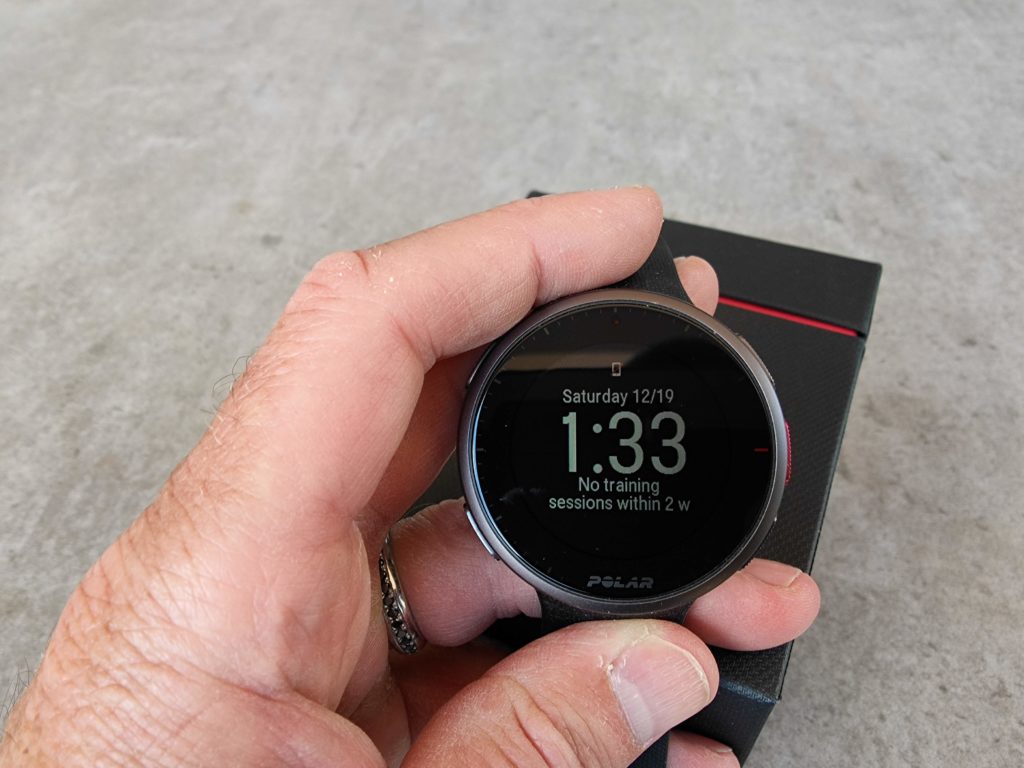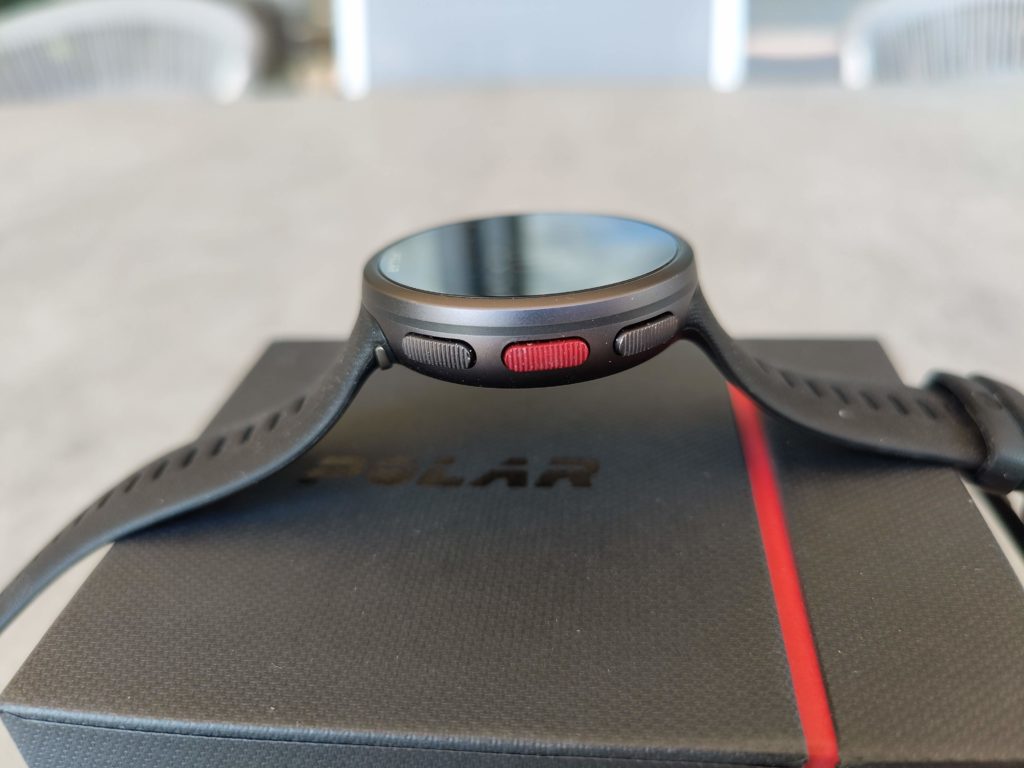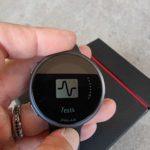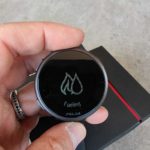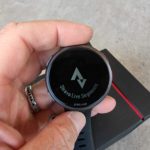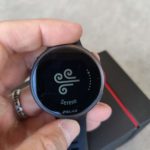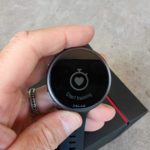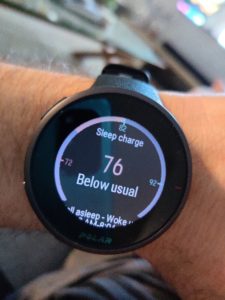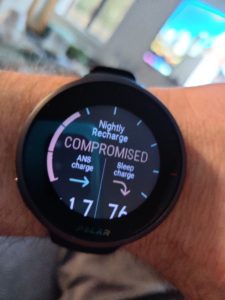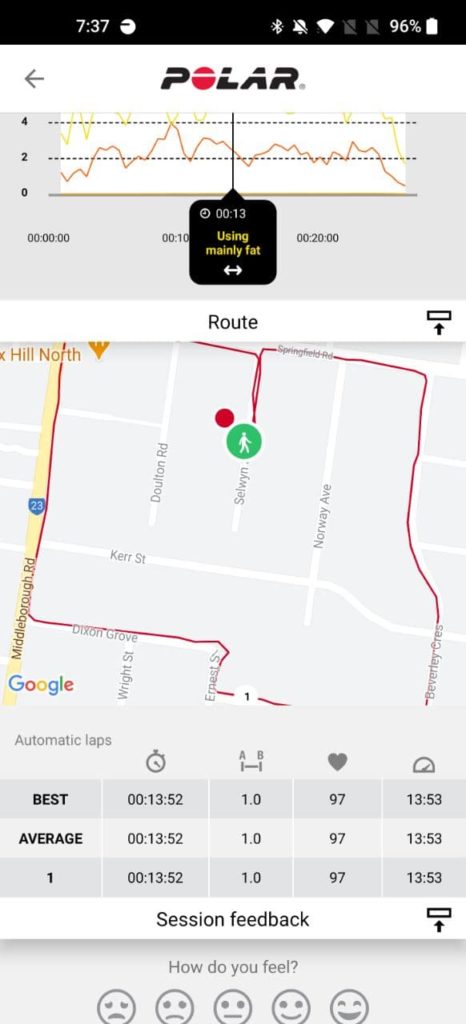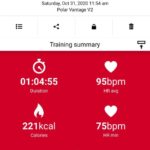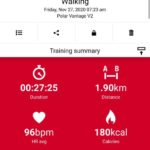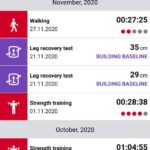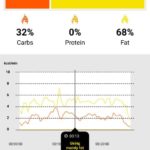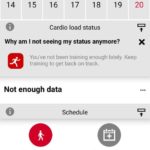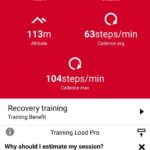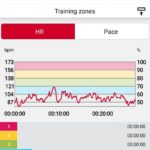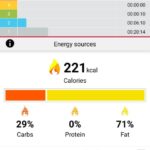There are a lot of so-called smartwatches around. We are seeing what we consider smartwatches — eg. Wear OS, Galaxy Watches etc — move more into the fitness space and at the same time we are seeing the more traditional fitness watches move into the smartwatch space.
Polar have been a serious player in the fitness space ever since the chest heart rate monitor bands were all the rage — they were THE product to have for the serious athlete. Slowly they have added smart features to their watches and the Polar Vantage V2 is their latest watch to attempt to combine smart features into a fitness watch.
While I would hardly call myself a serious athlete I do like to do a bit of fitness training. The new Vantage V2 adds in quite a few features over its previous iteration including a Running Performance Test, a Cycling FTP test, a Leg Recovery Test, music controls for your phone, weather and a better display. There are a lot more but these are the big ticket items currently available with more features coming before the end of the year — including Power-based training workouts on the Polar Flow app.
So what is it?
The watch has a rather small 1.2-inch colour touchscreen display. Its resolution is 240 x 240 and includes an ambient light sensor. The display is surrounded by a thick bezel, most likely to house the ambient light sensor but this makes the watch a lot bigger — before turning it on the watch face looks huge but unfortunately that is not the case.
Inside are a multitude of sensors including integrated GPS, GLONASS, Galileo, QZSS, Assisted GPS for fast fix times, and barometric altitude, incline, ascent and descent. Of course there is an optical heart rate sensor which uses 10 LEDs which are apparently meant to handle different skin colours better.
The sides of the casing include five buttons with one being a vibrant red button — each button has a different function and can take some getting used to. Do not try and figure out what each button does by yourself as it is extremely difficult — there is a reason the instruction manual PDF is over 150 pages!
The watch is powered by a 346 mAh Li-pol battery which Polar say will give you up to 40 hours of in-training mode or up to 7 days in watch made. With a mixture of both and not pushing the training as hard as a serious athlete I was able to get between five and six days of life out of it.
Those who are concerned about gallivanting around the countryside with a $800 on your wrist while performing all sorts of vigorous activities need not be so concerned with the Polar Vantage V2 manufactured to MIL-STD-810G standards (ie. it’s tough). The watch is also water resistant to 100m so yes, if swimming is your jam have at it while wearing the Polar Vantage V2.
Sports Tracking
The Polar Vantage V2 excels at the one thing it is meant to — sports tracking, serious sports tracking. As mentioned above it can be used to delve into the intricacies of various sports and workouts with its water proof rating.
Swim tracking can give you a heart rate, automatic stroke detection, lap tracking, distance, pace and rest times. Pool length can also be selected or changed manually if the pool you are swimming in is not a standard size. Some of the screens displayed can be customised to make it easier to read while swimming — these need to be changed within the Polar app.
Run tracking is one of the places where the Vantage V2 comes into its own with a large list of mid and post-run stats. While I’m not one for running much, if ever, I was able to test out the watch with a short run and was able to see stats such as pace, distance, speed, heart rate, HR zones, power zones, speed zones. there were also some more advanced running stats and recommendations which included Strava Live segments, heart-rate based fuelling recommendations, elevation gain and loss and Hill Splitter automatic hill tracking.
Testing side by side with other sports watches currently in my possession the Polar gave the most detail for the run out of them all and that detail seemed to be incredibly accurate.
Cycle tracking does not miss out in the detail stakes either with profiles available for road, indoor and mountain biking activities. You can set speed and power zones for each profile as well as use Hill Splitter to track the ascents and descents of various hills.
There are various fitness and tracking tests you can use the watch to perform including a VO2Max test and a leg recovery test.
The VO2Max test requires you to run gradually faster until you hit your max. From here the watch and app determine your max heart rate, VO2 Max estimate along with a few other measurements.
The leg recovery test was one that I had a bit of fun with considering my penchant for strength workouts. This involves basically setting a baseline for your leg strength (how high you can jump) and then performing the test to determine if your legs have recovered from the previous workout. Although the watch did only ask for a few jumps to set the baseline I had to perform it more to get an accurate baseline given the different levels of co-ordination and power that can go into a single individual jump.
Sleep Tracking
Sleep tracking is one area where even your standard smartwatch has evolved and improved. A watch with as many sensors and functions as the Polar Vantage V2 you would expect to be accurate with its sleep tracking. You’d be right to expect that.
After wearing the watch to bed (with a second watch on the other wrist) the watch and app gave what appeared to be accurate, detailed information on my sleep patterns and quality. Unfortunately a small amount of inactivity (eg. sitting still on a couch while watching TV) was also recorded as sleeping — obviously you can just ignore those times.
GPS accuracy
When this watch was tested we were limited how far we could travel in Melbourne which of course made it tough to fully test out things such as GPS but in the 5km I was allowed from home it was accurate in tracking where I went and how far I went — this was with full GPS mode turned on (the one that uses more battery).
There have been reports of its accuracy suffering in the low power GPS mode so I would suggest using the full power mode and just making sure the watch is charged fully before you begin your exercise.
HR accuracy
I was able to not just test the heart rate sensor while exercising against other fitness watches but also in a clinical environment side by side with an ECG. The Vantage V2 was more accurate and detailed than the other fitness watches but, as you would expect, it was not as accurate as the full ECG. Who would have thought? A medical ECG more accurate than optical wrist sensor HR tracking….
Polar Flow
The Polar Flow app is fairly clunky and could do with a redesign. The front page gives you a quick overview of your day/week/month of activities but for the more detailed activities you are going to need to drill down more into the app using the hamburger menu on the left hand side.
Here though you can see each of the activities you have performed on each day. My only issue here was that the activities are only sorted into the day they were performed (although they do have designated colours and icons) and to sort for all your swimming or all your cycling activities at a single glance requires some more app gymnastics and drilling to get there.
Once you are inside each workout though the detail provided by the app is better than anything I have ever seen before. Although I am not a super serious athlete I can easily see where it would be extremely helpful for the serious athlete to get the most out of their workouts.
One issue I had with the app was that there was no auto-sync, although the requirement of this is debatable. I assume this decision was made to save on battery life for the watch. It is possible that they could have made the app sync automatically whenever it was open but unfortunately you need to press a button on the watch for a few seconds to have it start syncing. For the serious athlete though who is going to be having more than just a quick glance at the results this is perfectly fine as they are going to be spending more time in the app than most
Smartwatch features
We have seen fitness watches move into the smart world a lot in recent years and Polar have done it quite well in the past. Unfortunately with the Vantage V2 it is a very very basic smartwatch — I assume this is because they need their own OS underneath for it to be able to perform all of the amazing functions it can do.
You can see notifications from any app you choose to but will only get the correct icon for a select few such as Instagram. There is no opportunity to reply to any of the notifications but at least you can see them.
You can control music such as playing, pausing, skipping tracks and controlling volume for the media playing on your phone but there is no way to store music on the watch itself — disappointing as the built in GPS is meant to mean you don’t have to take your phone with you when training. If you want to listen to music then yes you do.
The watch also does not have an NFC chip inside so there is no opportunity for contactless payments.
Battery life
Google really need to figure out what they are doing wrong with the battery life on their smartwatches. The Polar Vantage V2, even with its bazillion sensors running underneath the interface, was able to get a good four days of usage. Wear OS smartwatches are not even close to that.
Of course the more exercise you perform with it the less the battery is going to last so if you run a marathon with GPS on the entire time you will most likely need to charge it in the day or so afterwards.
Should you buy it?
The Polar Vantage V2 is possibly the most comprehensive sports watch I have ever used. If has more functionality than any other sports watch I’ve ever managed to get my hands on and is perfect for the serious athlete. For the average person that just wants basic workouts and steps it will do that extremely well and give you all the metrics you could ever wish for it may be a bit of overkill.
As a smartwatch though the Vantage V2 is a let down. It can display notifications and control music but that’s about it. It falls short of where “smart” watches are, and should be, in 2020. You may be able to see your notifications but you cannot respond to them, you cannot use your watch for contactless payments and you certainly cannot initiate a call or message from it.
If your primary goal is fitness then yes it is well worth consideration but do not expect the watch to do much outside of fitness applications and telling you the time and the presence of any phone notifications. If you are a serious athlete then the $699 that it will set you back may make it a worthwhile investment. For all others though there are better smartwatches that dabble in fitness out there.
The Polar Vantage V2 is available from leading tech and sports retailers along with the Polar website for $699 in black, silver/grey-lime, and black.green colours.


